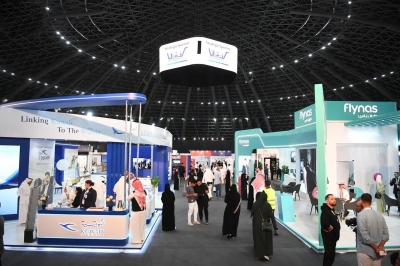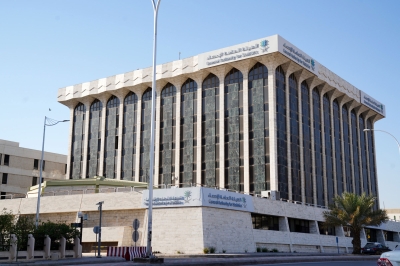
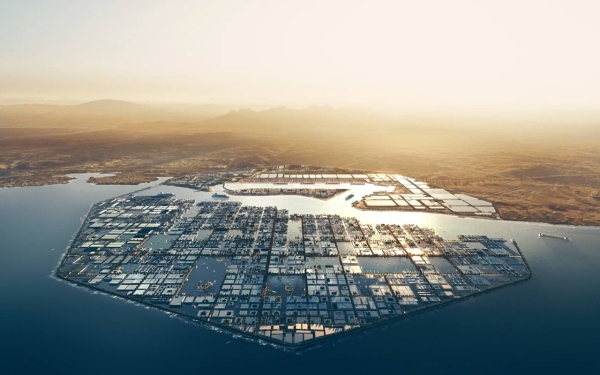
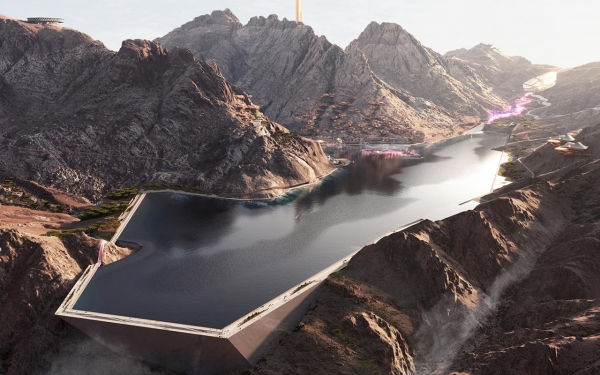
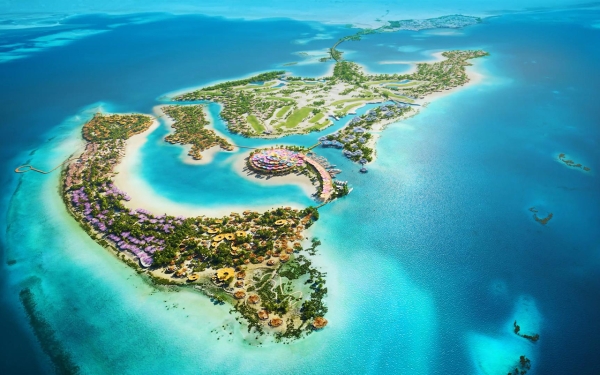
Tourism Projects in the Kingdom of Saudi Arabia are investment projects in the tourism sector that develop domestic tourism and attract tourists from all around the world to explore Saudi heritage and nature. The tourism sector supports the Kingdom's efforts in developing non-oil sectors and the concept of economic diversification. It also plays a dynamic role in achieving Saudi Vision 2030 through its contribution to the vision's three pillars: A Vibrant Society by promoting the Kingdom as an attractive destination for thirty-seven million pilgrims; A Thriving Economy by contributing with about 10 percent to the Kingdom's GDP, in addition to supporting the local private sector, and attracting foreign direct investment; and An Ambitious Nation by boosting the governmental non-oil revenues.
The Kingdom enjoys unique touristic features in many of its regions. Its terrain and atmosphere are diverse and include extended beaches, high mountains, and agricultural and sandy plains. Therefore, the Ministry of Tourism developed tourism and increased the investment, in addition to strengthening its workforce and attracting visitors and tourists from outside the Kingdom, in accordance with the National Tourism Strategy's objectives and Saudi Vision 2030.
The aim of regulating tourist activities in the Kingdom is to have added profit from the great diversity in geographical features and antiquities in many regions. The Kingdom has started supporting the tourism sector to achieve the purpose of investing in its tourism features. The Tourism Development Fund was established to encourage domestic tourism investments, open the doors of direct cooperation with investors, support the private sector by issuing investment loans, invest in projects by owning shares, and support distinguished and promising projects. Tourism investment is a bridge for cultural communication between the Kingdom and the world, and it also creates investment opportunities.
The domestic tourism industry in the Kingdom
The Kingdom also implements diverse tourism projects, the most prominent of which are: NEOM, Qiddiya, Jeddah Central, Soudah, Diriyah Gate, Amaala, and the Red Sea. It also attracted ten hundred thousand Saudis to the tourism sector through the Your Future is in Tourism program. Moreover, the Kingdom trained 137,000 individuals through its programs in 2021. There are plans to attract one hundred million annual visits and increase the number of tourists in the Kingdom by 300 percent in 2030. It also aims to raise the tourism sector’s contribution to the GDP to more than 10 percent by 2030. The Kingdom recorded 93.5 million visits in 2022, and it is working to make Riyadh the number one destination for tourism and travel. In 2019, the Kingdom launched the tourist visa, which is valid for a year, and allows tourists to stay in the country for up to ninety days. The visa is for tourism and Umrah purposes (excluding Hajj season) and excludes studying.
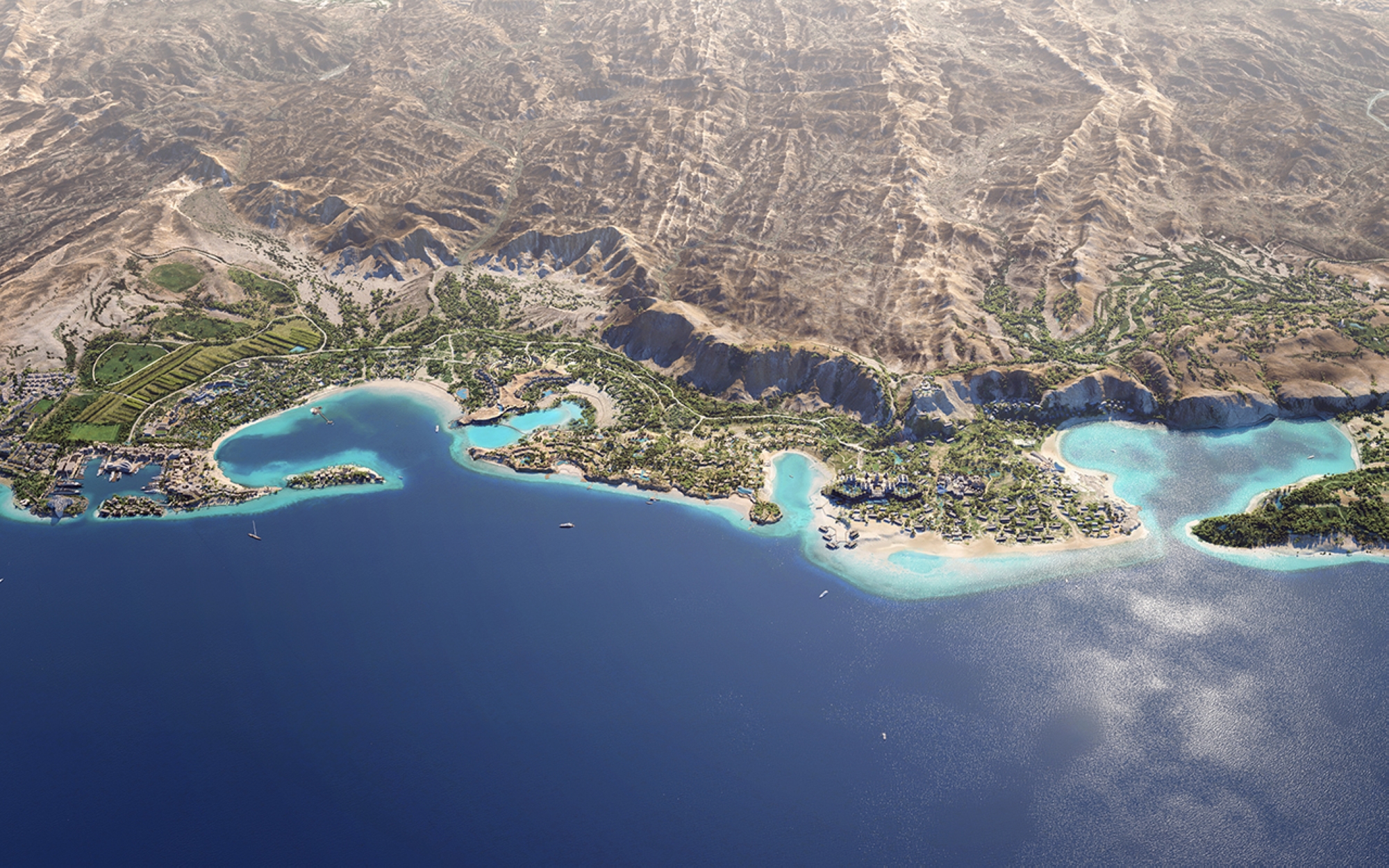
Red Sea Project
Many tourism projects have been launched in the Kingdom aligning with Saudi Vision 2030, most notably the Red Sea Project launched in 2017 on one of the most beautiful and naturally diverse sites in the world, in cooperation with the most prominent global companies in the hospitality industry. Its aim was to develop exceptional tourist resorts between the cities of Umluj and al- Wajh, only a short distance from one of the Kingdom's nature reserves and the dormant volcanoes in Harrat Rahat.
This project is an ideal investment in the touristic features of the region since it is a renewable tourism project and the most ambitious in the world. It includes an archipelago of more than ninety virgin islands. It boasts stunning nature, mountains, canyons, dormant volcanoes, and deserts, which will award tourists from within or outside the Kingdom with exclusive experiences.
The Red Sea Project brings together services and investments to provide several critical facilities that will include, once completed in 2030, about fifty resorts and hotels, where up to eight thousand hotel rooms will be made available, as well as around 1,300 residential properties distributed over twenty-two islands and six internal locations. The destination will also include luxury marinas, golf courses, and several entertainment and recreation facilities.
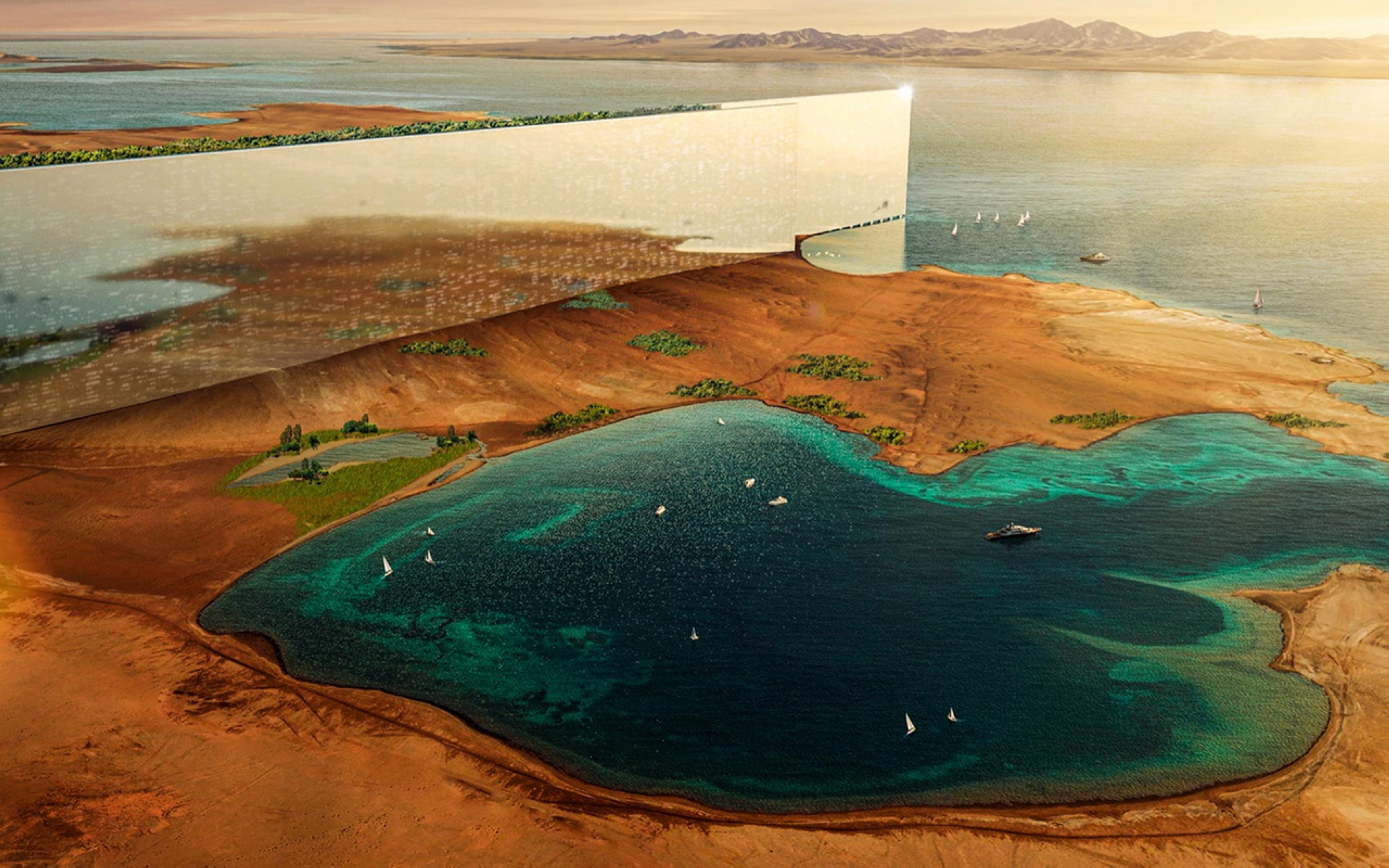
NEOM Project
The NEOM project is one of the prominent tourism and mega-economic projects. Its launch was announced in 2017. Funded by the Public Investment Fund and local and international investors, the project’s financing throughout execution and operation will surpass USD500 billion.
The project is situated in a distinguished strategic location that forms a meeting point between three continents: Asia, Africa, and Europe. The project's area extends in the northwest of the Kingdom over an area of 26,500 km, overlooking the Red Sea and the Gulf of Aqaba from the north and west, spanning 468 km, and is surrounded to the east by mountains which are 2,500 m high.
Amaala Project
It is one of the promising tourism projects in the Kingdom that is regarded as an ultra-luxury destination on the Red Sea coast. It aims to establish a whole new concept of luxury tourism centered around recuperation, health, and treatment. The project's area falls by nature within the same mild Mediterranean climate zone, thus awarding the project the title of the Riviera of the Middle East.
Amaala project was announced in 2018, and it is currently being developed to be a distinguished tourist destination located within Prince Mohammad Bin Salman Nature Reserve northwest of the Kingdom. The project is expected to be completed by 2028. Amalaa is one of the economic diversification projects that create investment opportunities for the local private sector, and attract foreign direct investors.
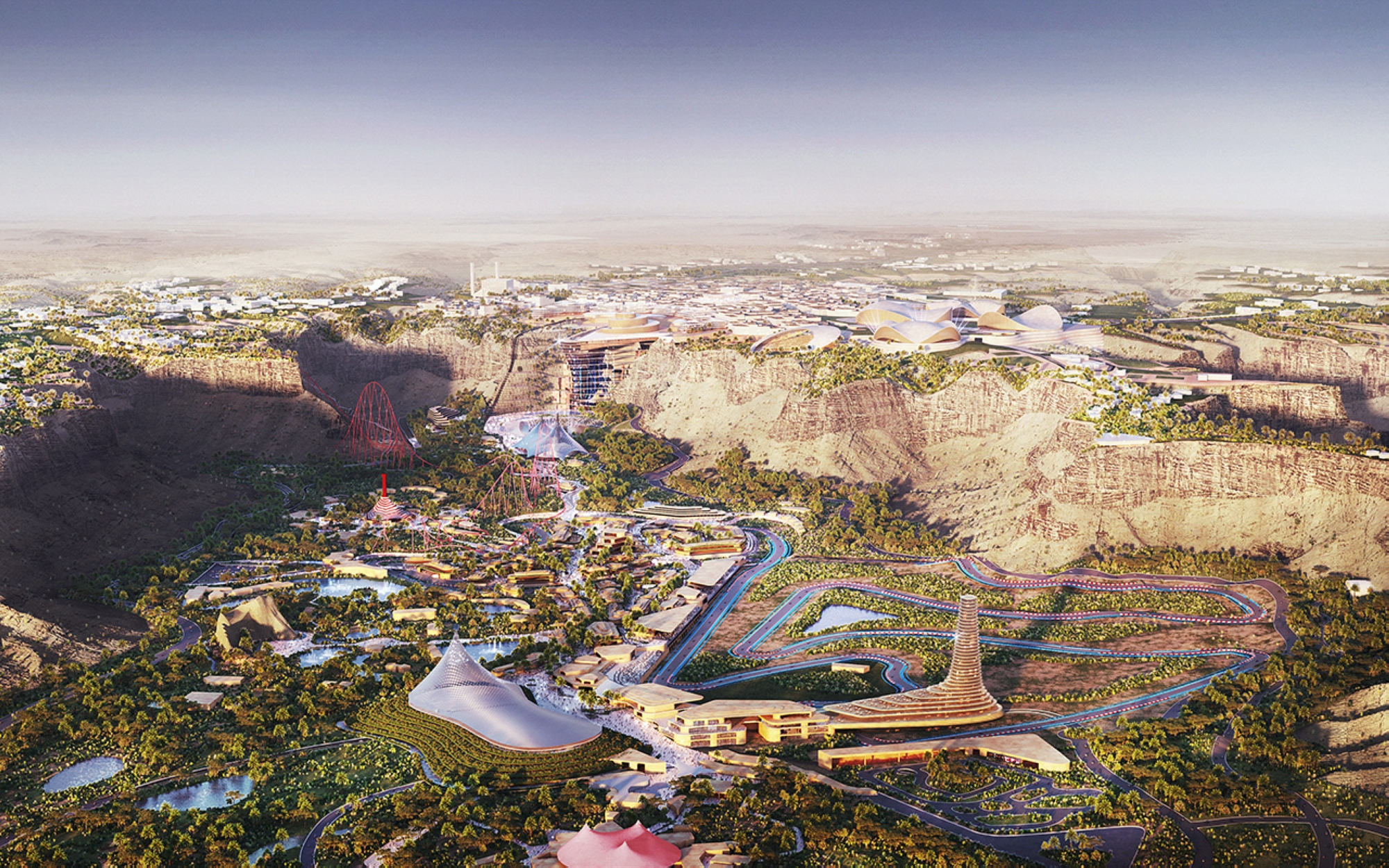
Qiddiya Project
The Qiddiya project was launched in 2018 in the west of the capital, Riyadh, as the most prominent new recreational, sports, and cultural destination in the Kingdom. Its first phase was extended until 2022. The project is best known for its innovative blend of programs provided by an unparalleled integrated destination offering leisure, sports, and artistic activities.
The project spans an expansive area of up to 334 km, featuring a development zone comprising 30 percent of the total space, while the remaining area is reserved for natural landmarks. The project’s general plan includes the five main development areas: the Resort Core, City Center, Motion Zone, Eco Zone, and Golf and Residential Community.
Al-Ula Governorate Project
Tourism projects in the Kingdom are being developed to leverage every possible feature of each region, be it the environment, landmarks, climate, or archeological sites. Located in the northwest of the Kingdom, al-Ula comes at the forefront of tourist attractions given its rich history and culture. Hegra is one example. It is also home to several historical and archeological sites and was the capital of the Dedanite and Lihyanite kingdoms.
Development work continues in al-Ula with the participation of major international experts in the industry. In April 2018, the Royal Commission for al-Ula announced its signing of a historic cooperation agreement as part of the ambitious development project for al-Ula Governorate, an area of distinct natural and cultural importance and home to the Nabataean city of Hijr, which was added to UNESCO's World Heritage List in 2008.
Al-Ula projects encompass the 'Journey Through Time Masterplan', a program aimed at developing and restoring archaeological sites, as well as natural and cultural oases in al-Ula Governorate. Overseen by the Royal Commission for al-Ula Governorate, it offers visitors a multitude of experiences highlighting al-Ula's extensive legacy and heritage, spanning over two hundred thousand years. Comprising five key districts - al-Ula Old Town, Dadan, Jabal Ikmah, the Nabatean Horizon, and Hijr Historical City - the project incorporates museums, exhibitions, and various cultural amenities. Additionally, it offers visitors accommodation options that reflect the region's cultural and natural identity. The masterplan will also contribute to revitalizing and rehabilitating the nine-km-long al-Ula Cultural Oasis, serving as the nexus of al-Ula's natural and cultural vitality. These five districts will be interconnected through the twenty-km-long al-Diyafa Valley, facilitating immersive experiences in hospitality and exploration, alongside distinct cultural and natural attractions and trails.
Diriyah Gate Projects
Diriyah holds significant historical and cultural significance in the Saudi culture. It stands as the cradle of the First Saudi State, serving as a gathering point for pilgrims and merchants' caravans, and nurturing some of the largest heritage revival projects in the Kingdom. Its numerous monuments, deemed among the most important heritage landmarks of the Kingdom, led to its inclusion in the UNESCO World Heritage List in 2010.
Diriyah boasts numerous features that elevate it as a premier tourist destination. Situated on the outskirts of Riyadh, nestled along the banks of Wadi Hanifah, it is distinguished by its ancient architectural style and arched clay walls. The city's main landmark is al-Turaif District which includes the city's important forts and buildings. It is also the seat of the government of the First Saudi State and was announced in 1745 as the capital, paving the way for the rise of the Kingdom.
The Diriyah Gate project is an influential addition to the objectives of Saudi Vision 2030. Since its launch in November 2019, it has been rehabilitated and developed to attract twenty-five million visitors annually and to become the largest heritage and cultural project in the world. The first stage of the project is to develop al-Bujairi area as per modern urban and environmental criteria for the rehabilitation of historical and heritage sites in the world.
Related quizzes
